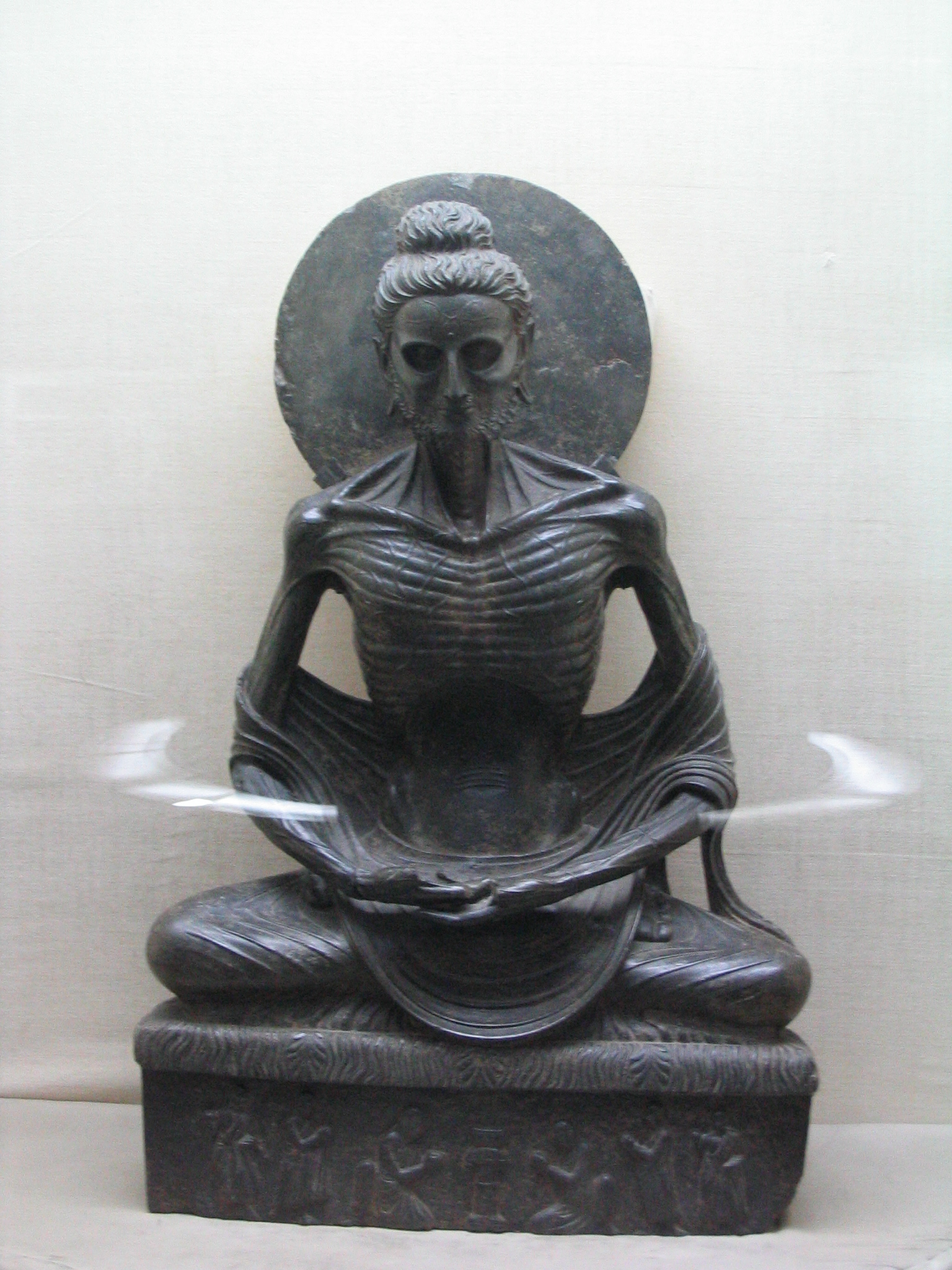|
Thai Forest Tradition
The Kammaṭṭhāna Forest Tradition of Thailand (from meaning Kammaṭṭhāna, "place of work"), commonly known in the West as the Thai Forest Tradition, is a Parampara, lineage of Theravada Buddhist monasticism. The Thai Forest Tradition started around 1900 with Ajahn Mun Bhuridatto, who wanted to practice Buddhist monasticism and its meditative practices, according to the normative standards of pre-sectarian Buddhism. After studying with Ajahn Sao Kantasīlo and wandering through the northeast of Thailand, Ajahn Mun reportedly became a Anāgāmi, non-returner and started to teach in Northeast Thailand. He strove for a revival of the Pre-sectarian Buddhism, Early Buddhism, insisting on a strict observance of the Buddhist monastic code known as the Vinaya and teaching the practice of ''jhāna'' and the realization of ''nibbāna''. Initially, Ajahn Mun's teachings were met with fierce opposition, but in the 1930s his group was acknowledged as a formal faction of Thai Budd ... [...More Info...] [...Related Items...] OR: [Wikipedia] [Google] [Baidu] |
Ajahn Mun
Mun Bhuridatta (, ; ; 1870–1949) was a Thai bhikkhu from Isan region who is credited, along with his mentor, Ajahn Sao Kantasīlo, with establishing the Thai Forest Tradition or " Kammaṭṭhāna tradition" that subsequently spread throughout Thailand and to several countries abroad. Biography Ajaan Mun was born in Baan Kham Bong, a farming village in Ubon Ratchathani Province, Isan. Ordained as a monk in 1893, he spent the remainder of his life wandering through Thailand, Burma, and Laos, dwelling for the most part in the forest, engaged in the practice of meditation. He attracted an enormous following of students and, together with his teacher, Sao Kantasīlo (1861–1941) established the Thai Forest Tradition (the kammaṭṭhāna tradition) that subsequently spread throughout Thailand and to several countries abroad. He died at Wat Suddhavasa, Sakon Nakhon Province. Forest meditation Ajaan Mun's mode of practice was solitary and strict. He followed the vinaya (mona ... [...More Info...] [...Related Items...] OR: [Wikipedia] [Google] [Baidu] |
Mongkut
Mongkut (18 October 18041 October 1868) was the fourth Monarchy of Thailand, king of Siam from the Chakri dynasty, titled Rama IV. He reigned from 1851 until his death in 1868. The reign of Mongkut was marked by significant modernization initiatives and diplomatic engagements, which played pivotal roles in shaping Thailand's trajectory towards progress and international relations. Siam first felt the pressure of Colonialism, Western expansionism during Mongkut's reign. Mongkut embraced Western innovations and initiated the modernization of his country, both in technology and culture—earning him the nickname "The Father of Science and Technology" in Siam. Mongkut was also known for appointing his younger brother, Prince Chutamani, as Second King, crowned in 1851 as King Pinklao. Mongkut told the country that Pinklao should be respected with equal honor to himself (as King Naresuan had done with his brother Ekathotsarot in 1583). During Mongkut's reign, the power of the House ... [...More Info...] [...Related Items...] OR: [Wikipedia] [Google] [Baidu] |
Mongkut In The Sangha
Mongkut (18 October 18041 October 1868) was the fourth king of Siam from the Chakri dynasty, titled Rama IV. He reigned from 1851 until his death in 1868. The reign of Mongkut was marked by significant modernization initiatives and diplomatic engagements, which played pivotal roles in shaping Thailand's trajectory towards progress and international relations. Siam first felt the pressure of Western expansionism during Mongkut's reign. Mongkut embraced Western innovations and initiated the modernization of his country, both in technology and culture—earning him the nickname "The Father of Science and Technology" in Siam. Mongkut was also known for appointing his younger brother, Prince Chutamani, as Second King, crowned in 1851 as King Pinklao. Mongkut told the country that Pinklao should be respected with equal honor to himself (as King Naresuan had done with his brother Ekathotsarot in 1583). During Mongkut's reign, the power of the House of Bunnag reached its zenith: It ... [...More Info...] [...Related Items...] OR: [Wikipedia] [Google] [Baidu] |
Board Game
A board game is a type of tabletop game that involves small objects () that are placed and moved in particular ways on a specially designed patterned game board, potentially including other components, e.g. dice. The earliest known uses of the term "board game" are between the 1840s and 1850s. While game boards are a necessary and sufficient condition of this genre, card games that do not use a standard deck of cards, as well as games that use neither cards nor a game board, are often colloquially included, with some referring to this genre generally as "table and board games" or simply "tabletop games". Eras Ancient era Board games have been played, traveled, and evolved in most cultures and societies throughout history Board games have been discovered in a number of archaeological sites. The oldest discovered gaming pieces were discovered in southwest Turkey, a set of elaborate sculptured stones in sets of four designed for a chess-like game, which were created during the ... [...More Info...] [...Related Items...] OR: [Wikipedia] [Google] [Baidu] |
Tantra
Tantra (; ) is an esoteric yogic tradition that developed on the India, Indian subcontinent beginning in the middle of the 1st millennium CE, first within Shaivism and later in Buddhism. The term ''tantra'', in the Greater India, Indian traditions, also means any systematic broadly applicable "text, theory, system, method, instrument, technique or practice". A key feature of these traditions is the use of mantras, and thus they are commonly referred to as Mantramārga ("Path of Mantra") in Hinduism or Mantrayāna ("Mantra Vehicle") and Guhyamantra ("Secret Mantra") in Buddhism. In Buddhism, the Vajrayana traditions are known for tantric ideas and practices, which are based on Indian Tantras (Buddhism), Buddhist Tantras. They include Tibetan Buddhism, Indo-Tibetan Buddhism, Chinese Esoteric Buddhism, Japanese Shingon Buddhism and Nepalese Newar Buddhism. Although Southern Esoteric Buddhism does not directly reference the tantras, its practices and ideas parallel them. In Bud ... [...More Info...] [...Related Items...] OR: [Wikipedia] [Google] [Baidu] |
Mahayana Buddhism
Mahāyāna ( ; , , ; ) is a term for a broad group of Buddhist traditions, texts, philosophies, and practices developed in ancient India ( onwards). It is considered one of the three main existing branches of Buddhism, the others being Theravāda and Vajrayāna.Harvey (2013), p. 189. Mahāyāna accepts the main scriptures and teachings of early Buddhism but also recognizes various doctrines and texts that are not accepted by Theravada Buddhism as original. These include the Mahāyāna sūtras and their emphasis on the ''bodhisattva'' path and ''Prajñāpāramitā''. Vajrayāna or Mantra traditions are a subset of Mahāyāna which makes use of numerous tantric methods Vajrayānists consider to help achieve Buddhahood. Mahāyāna also refers to the path of the bodhisattva striving to become a fully awakened Buddha for the benefit of all sentient beings, and is thus also called the "Bodhisattva Vehicle" (''Bodhisattvayāna''). Damien Keown (2003), A Dictionary of Buddhism', ... [...More Info...] [...Related Items...] OR: [Wikipedia] [Google] [Baidu] |
Mueang
Mueang ( Ahom: 𑜉𑜢𑜤𑜂𑜫; ''mɯ̄ang'', ), Muang ( ''mɯ́ang'', ), Möng ( Tai Nuea: ᥛᥫᥒᥰ ''möeng''; ''móeng'', ), Meng ( zh, c=猛 or 勐) or Mường (Vietnamese) were pre-modern semi-independent city-states or principalities in mainland Southeast Asia, adjacent regions of Northeast India and Southern China, including what is now Thailand, Laos, Burma, Cambodia, parts of northern Vietnam, southern Yunnan, western Guangxi and Assam. Mueang was originally a term in the Tai languages for a town having a defensive wall and a ruler with at least the Thai noble rank of '' khun'' (), together with its dependent villages. The mandala model of political organisation organised states in collective hierarchy such that smaller mueang were subordinate to more powerful neighboring ones, which in turn were subordinate to a central king or other leader. The more powerful mueang (generally designated as , , , or – with Bangkok as ''Krung'' Thep Maha ''Nakhon'') occ ... [...More Info...] [...Related Items...] OR: [Wikipedia] [Google] [Baidu] |
Nibbāna
Nirvana, in the Indian religions (Jainism, Hinduism, Buddhism, and Sikhism), is the concept of an individual's passions being extinguished as the ultimate state of salvation, release, or liberation from suffering ('' duḥkha'') and from the cycle of birth and rebirth (''saṃsāra''). In Indian religions, nirvana is synonymous with ''moksha'' and ''mukti''. All Indian religions assert it to be a state of perfect quietude, freedom, and highest happiness; liberation from attachment and worldly suffering; and the ending of ''samsara'', the cycle of existence.Gavin Flood, ''Nirvana''. In: John Bowker (ed.), '' Oxford Dictionary of World Religions'' However, non-Buddhist and Buddhist traditions describe these terms for liberation differently. In Hindu philosophy, it is the union of or the realization of the identity of Atman with Brahman, depending on the Hindu tradition. In Jainism, nirvana is also the soteriological goal, representing the release of a soul from karmic bondage ... [...More Info...] [...Related Items...] OR: [Wikipedia] [Google] [Baidu] |
Jhāna
In the oldest texts of Buddhism, ''dhyāna'' () or ''jhāna'' () is a component of the training of the mind ('' bhavana''), commonly translated as meditation, to withdraw the mind from the automatic responses to sense-impressions and "burn up" the defilements, leading to a "state of perfect equanimity and awareness ('' upekkhā- sati- parisuddhi'')." ''Dhyāna'' may have been the core practice of pre-sectarian Buddhism, in combination with several related practices which together lead to perfected mindfulness and detachment. In the later commentarial tradition, which has survived in present-day Theravāda, ''dhyāna'' is equated with "concentration", a state of one-pointed absorption in which there is a diminished awareness of the surroundings. In the contemporary Theravāda-based Vipassana movement, this absorbed state of mind is regarded as unnecessary and even non-beneficial for the first stage of awakening, which has to be reached by mindfulness of the body and ''vipassa ... [...More Info...] [...Related Items...] OR: [Wikipedia] [Google] [Baidu] |
Vinaya
The Vinaya (Pali and Sanskrit: विनय) refers to numerous monastic rules and ethical precepts for fully ordained monks and nuns of Buddhist Sanghas (community of like-minded ''sramanas''). These sets of ethical rules and guidelines developed over time during the Buddha's life. More broadly, the term also refers to the tradition of Buddhist ethical conduct. The term "Vinaya" also refers to a genre of Buddhist texts which contain these precepts and rules and discuss their application, along with various stories of how the rules arose and how they are to be applied. Various lists and sets of Vinaya precepts were codified and compiled after the Buddha's death in different Vinaya texts.The 17th Karmapa Orgyen Trinley Dorje. "The development of the Vinaya rules for monastics and the Pratimoksha Sutra precepts". August 2022. Transcribed by Adele Tomlin, ''Dakini Translations'', 02 September 2022. As one of the main components of the canonical Buddhist canons (Tripiṭakas), a ... [...More Info...] [...Related Items...] OR: [Wikipedia] [Google] [Baidu] |
Pre-sectarian Buddhism
Pre-sectarian Buddhism, also called early Buddhism, the earliest Buddhism, original Buddhism, and primitive Buddhism, is Buddhism as theorized to have existed before the various Early Buddhist schools developed, around 250 BCE (followed by later subsects of Buddhism). The contents and teachings of this pre-sectarian Buddhism must be deduced or re-constructed from the earliest Buddhist texts, which by themselves are already sectarian. The whole subject remains intensely debated by scholars, not all of whom believe a meaningful reconstruction is possible. "Early Buddhism" may also be used for considerably later periods. Name Various terms are being used to refer to the earliest period of Buddhism: * "Pre-sectarian Buddhism" * "Early Buddhism", * "The earliest Buddhism", * "Original Buddhism", * "The Buddhism of the Buddha himself." * Precanonical Buddhism * Primitive Buddhism Some Japanese scholars refer to the subsequent period of the early Buddhist schools as ''sectarian ... [...More Info...] [...Related Items...] OR: [Wikipedia] [Google] [Baidu] |









